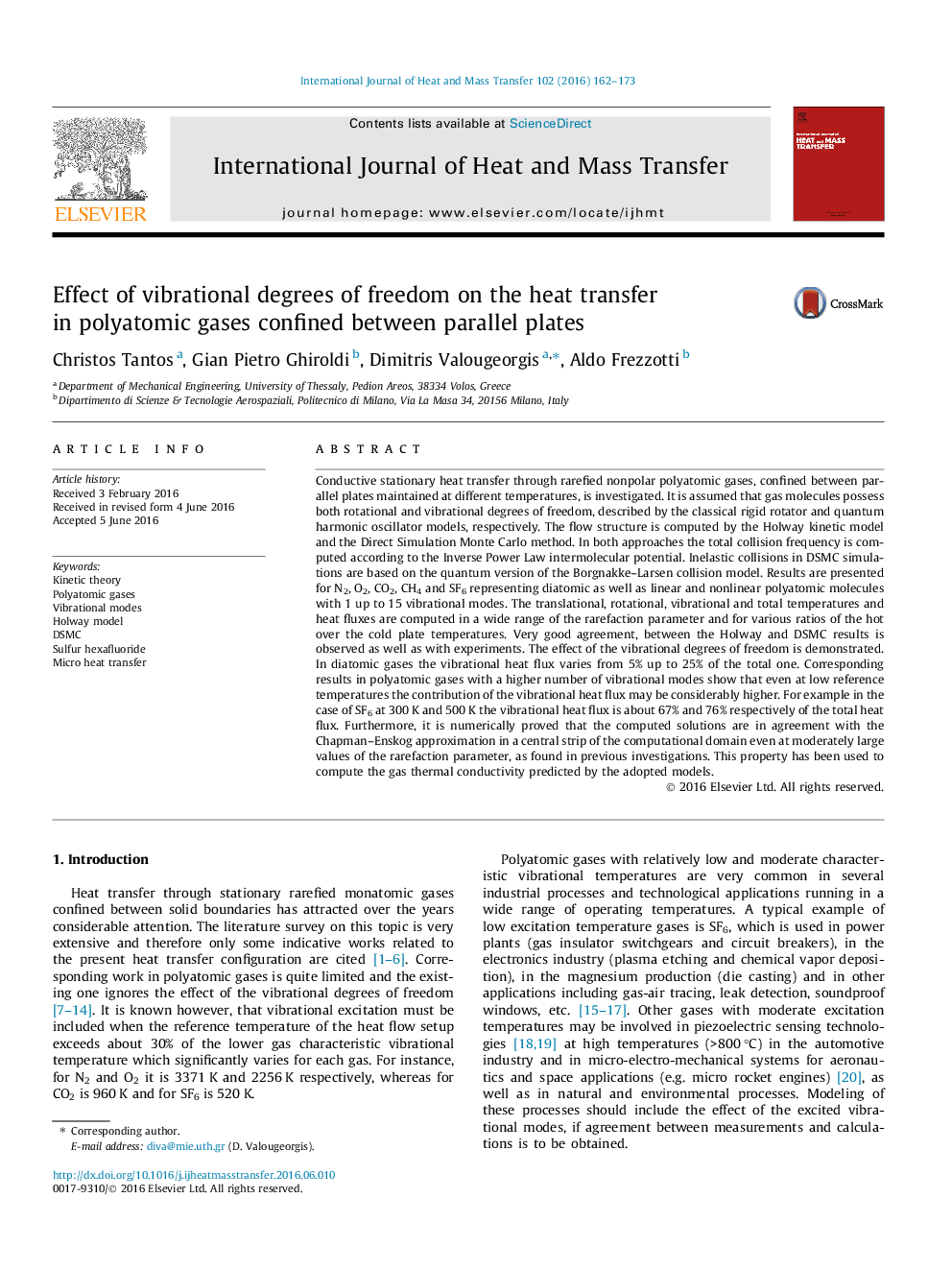| کد مقاله | کد نشریه | سال انتشار | مقاله انگلیسی | نسخه تمام متن |
|---|---|---|---|---|
| 7055048 | 1458040 | 2016 | 12 صفحه PDF | دانلود رایگان |
عنوان انگلیسی مقاله ISI
Effect of vibrational degrees of freedom on the heat transfer in polyatomic gases confined between parallel plates
ترجمه فارسی عنوان
اثر ارتعاشات آزادی بر انتقال گرما در گازهای چند گانه محدود بین صفحات موازی
دانلود مقاله + سفارش ترجمه
دانلود مقاله ISI انگلیسی
رایگان برای ایرانیان
کلمات کلیدی
موضوعات مرتبط
مهندسی و علوم پایه
مهندسی شیمی
جریان سیال و فرایندهای انتقال
چکیده انگلیسی
Conductive stationary heat transfer through rarefied nonpolar polyatomic gases, confined between parallel plates maintained at different temperatures, is investigated. It is assumed that gas molecules possess both rotational and vibrational degrees of freedom, described by the classical rigid rotator and quantum harmonic oscillator models, respectively. The flow structure is computed by the Holway kinetic model and the Direct Simulation Monte Carlo method. In both approaches the total collision frequency is computed according to the Inverse Power Law intermolecular potential. Inelastic collisions in DSMC simulations are based on the quantum version of the Borgnakke-Larsen collision model. Results are presented for N2, O2, CO2, CH4 and SF6 representing diatomic as well as linear and nonlinear polyatomic molecules with 1 up to 15 vibrational modes. The translational, rotational, vibrational and total temperatures and heat fluxes are computed in a wide range of the rarefaction parameter and for various ratios of the hot over the cold plate temperatures. Very good agreement, between the Holway and DSMC results is observed as well as with experiments. The effect of the vibrational degrees of freedom is demonstrated. In diatomic gases the vibrational heat flux varies from 5% up to 25% of the total one. Corresponding results in polyatomic gases with a higher number of vibrational modes show that even at low reference temperatures the contribution of the vibrational heat flux may be considerably higher. For example in the case of SF6 at 300Â K and 500Â K the vibrational heat flux is about 67% and 76% respectively of the total heat flux. Furthermore, it is numerically proved that the computed solutions are in agreement with the Chapman-Enskog approximation in a central strip of the computational domain even at moderately large values of the rarefaction parameter, as found in previous investigations. This property has been used to compute the gas thermal conductivity predicted by the adopted models.
ناشر
Database: Elsevier - ScienceDirect (ساینس دایرکت)
Journal: International Journal of Heat and Mass Transfer - Volume 102, November 2016, Pages 162-173
Journal: International Journal of Heat and Mass Transfer - Volume 102, November 2016, Pages 162-173
نویسندگان
Christos Tantos, Gian Pietro Ghiroldi, Dimitris Valougeorgis, Aldo Frezzotti,
